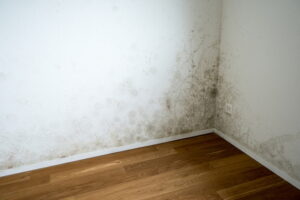Your air conditioner has an important job: to keep your home and family cool during our hot, humid summers. What it shouldn’t do is harbor unhealthy growth that can not only cause your AC to stop working, but can cause health issues for your household.
An air conditioner works by collecting and draining the condensation that forms from water vapor in your home’s air. When your AC isn’t working as it should, this condensation can combine with dirt, dust, and dander, which becomes a breeding ground for mold.
Unfortunately, mold growth is a common issue for air conditioning systems. Its small, dark spaces make it an easy, ideal place for mold growth to begin. Let’s go over why this happens and what you should do if you suspect mold growth in your AC.
The Evaporator Coil
The place where mold can become the biggest problem for an air conditioner is the evaporator coil. The evaporator coil is found on the inside of your AC’s interior cabinet. This essential component is where the refrigerant evaporates and draws heat from the air around it, cooling it down. It also draws moisture from the air and deposits that moisture into a condensate drain. The water along the coil makes it the ideal spot for mold to develop.
When mold develops on the evaporator coil, it creates a layer of insulation along the coil. This makes it harder for the coil to draw heat from the air. You’ll notice your air conditioner’s energy efficiency is suffering and that your AC isn’t cooling your house down sufficiently.
When mold develops in the evaporator coil, these harmful spores can spread around your home. That’s where the air from the blower must move before it enters your home’s ventilation system. You’ll notice when your home’s air smells musty and moldy, a situation that is referred to as “dirty sock syndrome.”
Mold may also grow in the condensate line that removes water from the AC and transfers it to the outside of your house. This narrow tube designed to transfer water is a prime spot for mold to develop. Eventually, the mold spores can combine with dirt and dust and lead to a blockage. When this happens, the drain pan will overflow.
Other Signs of Mold Growth
As you can imagine, mold in your AC is a health hazard. Here are some other signs to be on the lookout for.
- The “dirty sock” or musty/moldy smell gets worse when the AC is on
- Black or dark-colored dust on or near air vents
- Visible mold spores or buildup on your AC, air vents, or other areas of your home
If you suspect you’ve got mold giving your AC a tough time, let our Super Techs take care of it. We’re experienced with handling the types of issues that our climate can cause in air conditioners.
At Hagerstown Heating & Cooling, we want to protect customers from Google and other contractors. Honesty at Its Best. Contact us for AC installation in Boonsboro, MD.

